How to Grow & Propagate Bay Laurel Plants
Cultivate bay laurel for flavor & privacy. Get the details of planting & propagating bay leaf—expert tips for growing bay leaf in any climate.
Did you know you could grow a bay leaf (also known as bay laurel) plant? It makes an excellent privacy hedge, and its leaves add a delightful flavor to soups, stews, and rice. Additionally, bay laurel leaves make beautiful wreaths and more. Discover the secrets to growing bay leaf in this blog post.
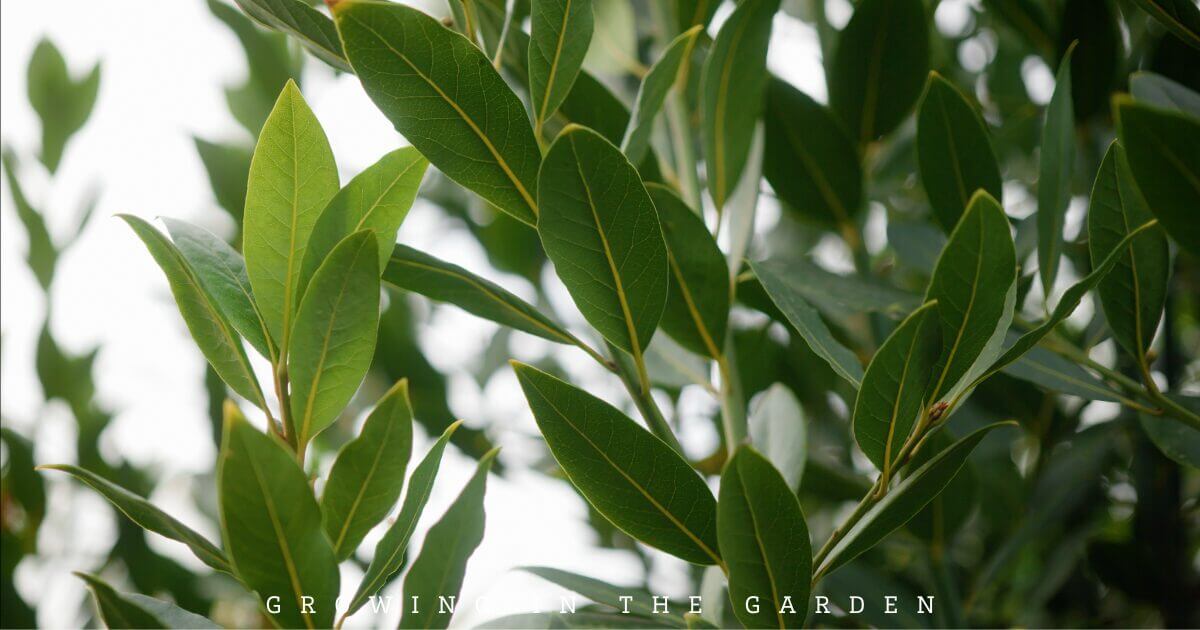
Bay laurel (Lauro nobilis) is native to the Mediterranean and thrives outdoors year-round in warm climates (USDA zones 8-10). Here in the low desert of Arizona, bay laurel is a reliable perennial herb. However, if you live in a colder zone, growing it in a container is your best bet. This will allow you to bring it indoors during winter when temperatures drop below freezing.

Jump to the topics below that you would like to learn more about:
- How to plant bay laurel
- How to propagate bay leaf from cuttings
- When to plant bay leaf
- How to care for bay leaf
- How to grow bay leaf in containers
- Harvesting bay laurel
- How to dry bay laurel leaves
- How to use bay leaf
How to plant bay laurel
The easiest way to start bay laurel is to find a transplant at a local nursery.
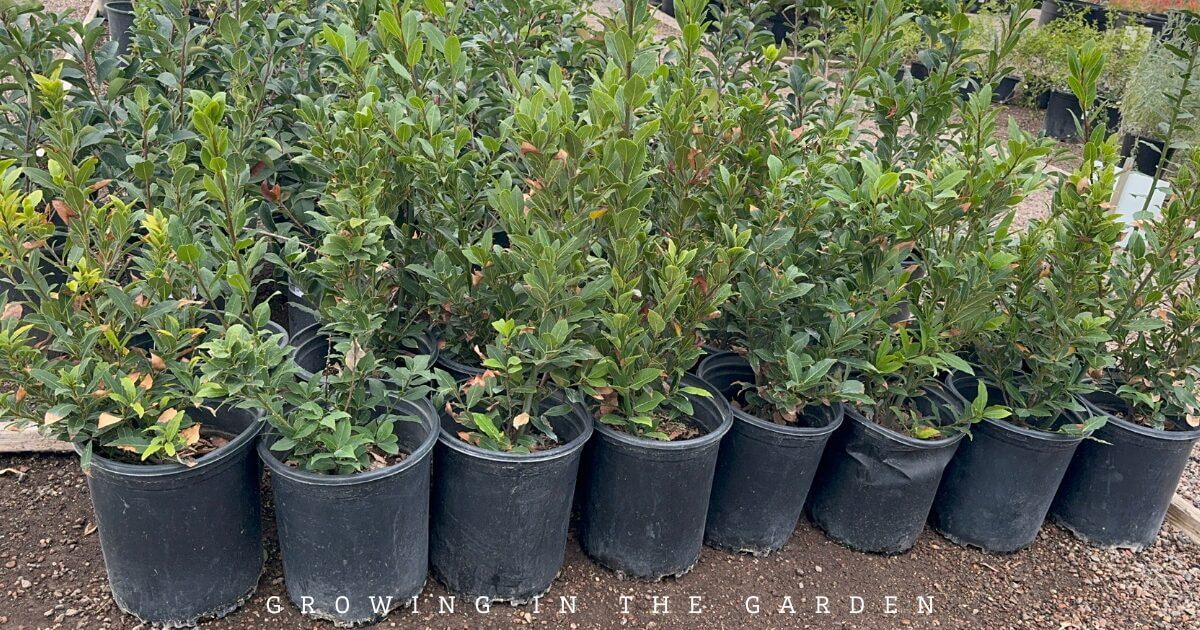
Opt for a location that receives ample sunlight. Morning sun and afternoon shade are ideal, especially in a hot summer climate like Arizona.
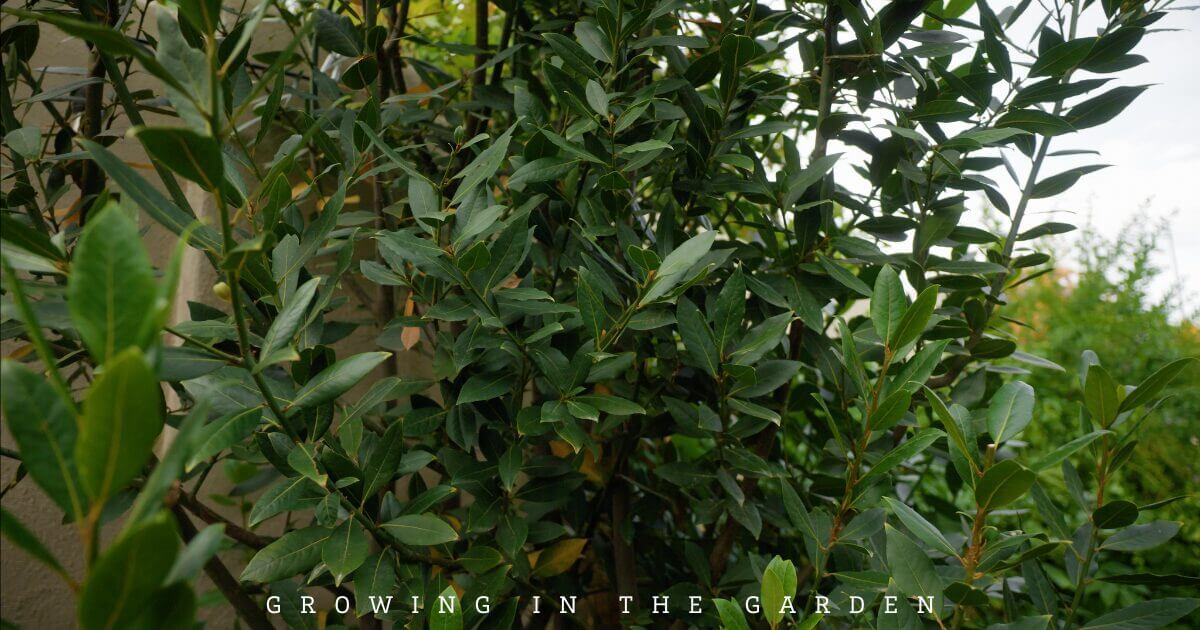
Plant outside in good to average soil that is well-draining to prevent waterlogging, which can lead to root rot. If your soil is heavy and retains water, consider amending it with organic matter such as compost to improve drainage.
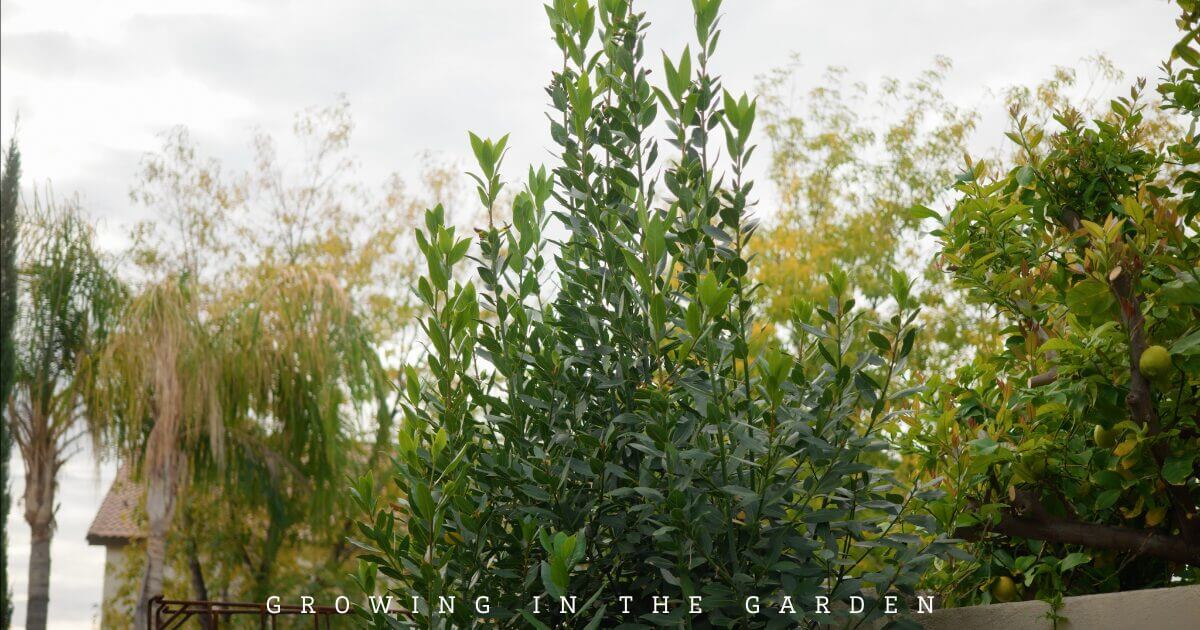
Plants can grow large, but tend to have an upright form. Treat bay laurel as a small, slow-growing tree. Space bay laurel plants 6-8 feet (1.8-2.4 meters) apart. Use closer spacing of 3-4 feet (.9-1.2 m) apart for privacy hedges.
To plant bay leaf, dig a hole twice as wide as the root ball of your plant but just as deep so that the transplant is neither too low nor too high in the ground. Gently loosen the roots to encourage growth, place the plant in the hole, and fill it back in with native soil. Lightly tamp down the soil around the plant and water it thoroughly. Top with mulch.
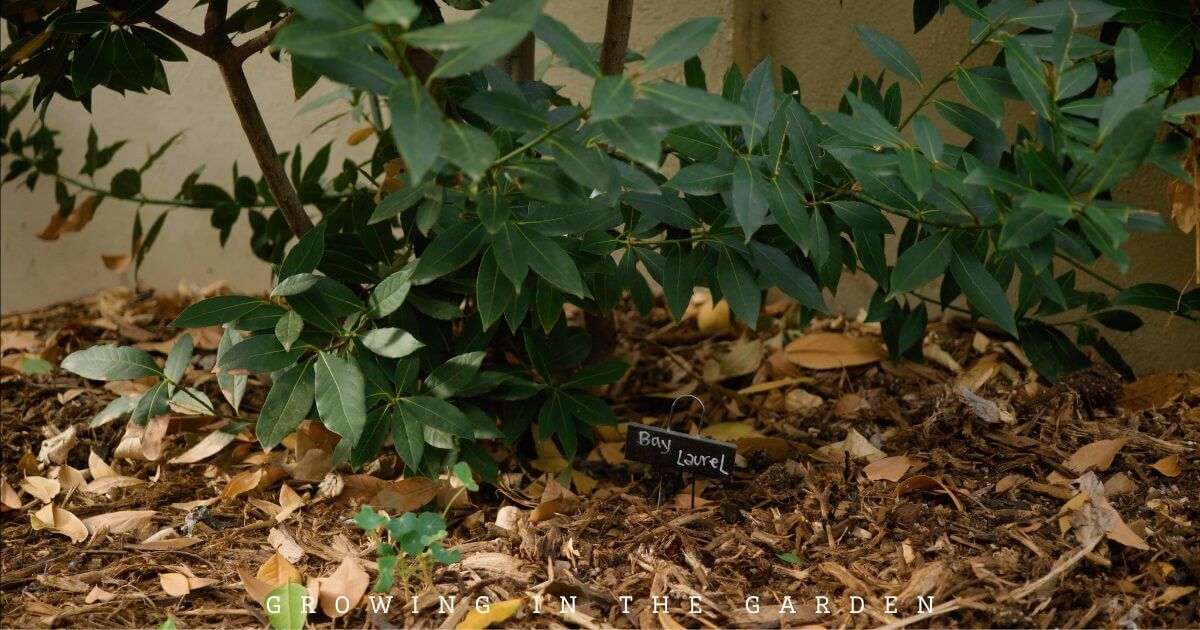
Texas Mountain Laurel is another small slow growing tree that is a good option if you don’t have room for a large tree in your landscape. Learn how to grow Texas Mountain Laurel in this guide.
How to propagate bay leaf from cuttings
If you can’t find transplants at a local nursery, you can make your plant with a cutting. Bay laurel is pretty slow-growing, but propagation can be an excellent way to get a plant.
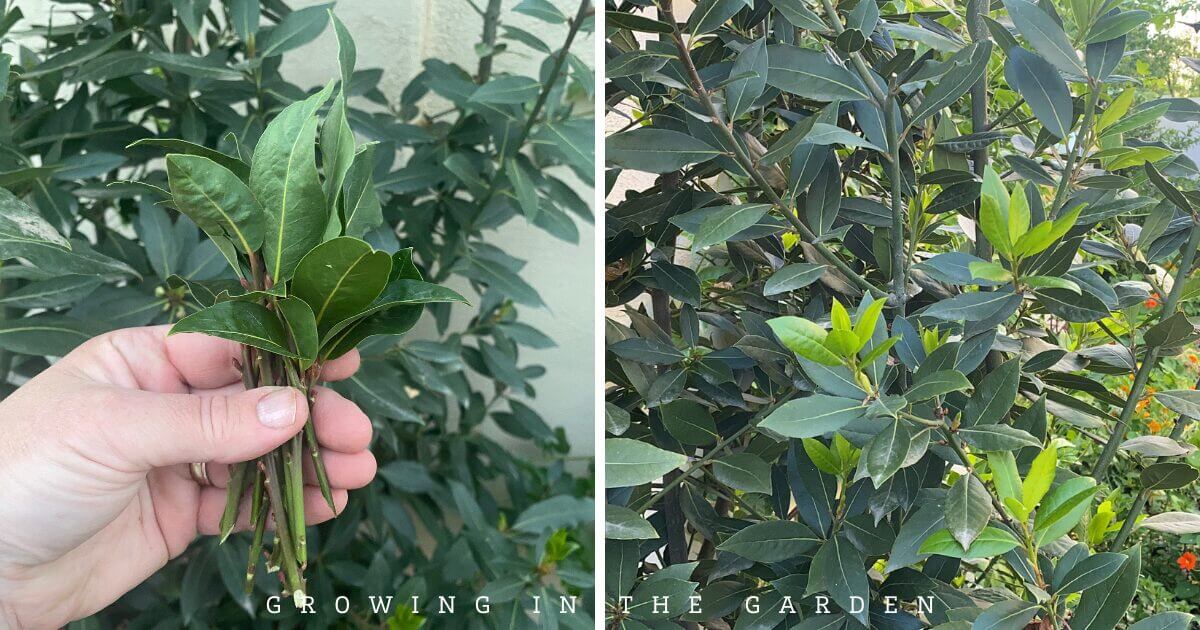
To propagate bay laurel from a cutting, select a healthy, young stem from an established plant during the spring or summer when the plant’s growth is most vigorous.
Cut a 4-to-6-inch (10-15 cm) section just below a leaf node where the concentration of growth hormones is high. Strip the lower leaves, leaving two or three at the top, and remove the top half of those leaves. Dip the cut end into a rooting hormone to encourage root development. Then, plant the cutting in a well-draining soil mixture that contains vermiculite or perlite.
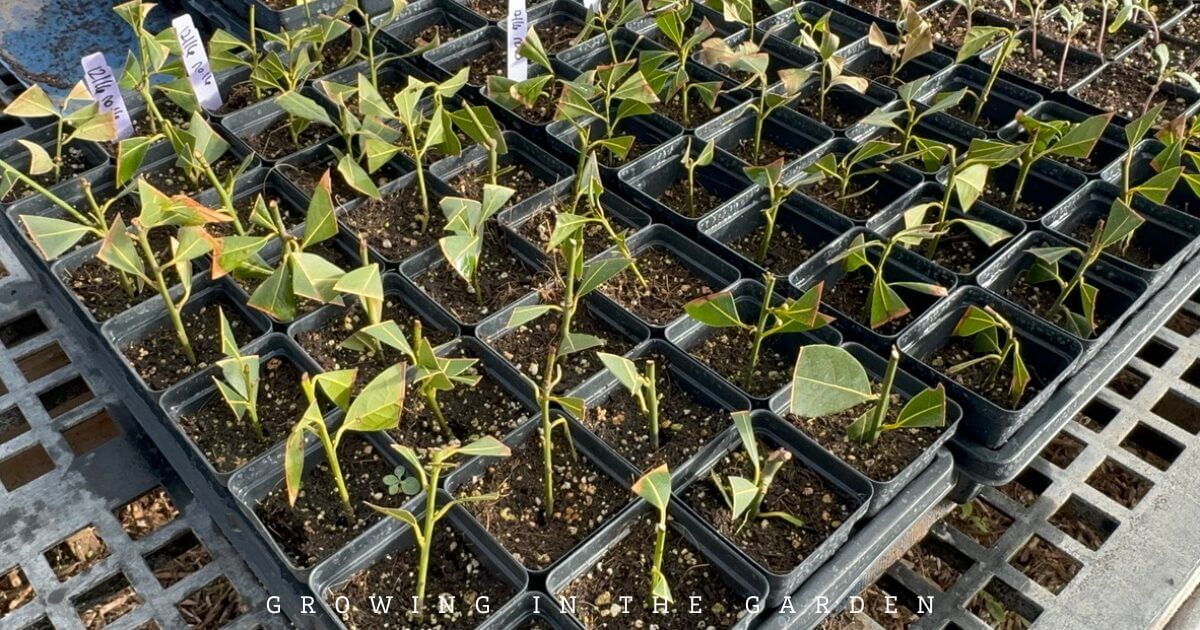
Keep the soil consistently moist but not waterlogged, and place the pot in a warm spot with indirect sunlight. You may need to cover it to help maintain the humidity. Take the cover off when the plant starts growing.
Take more cuttings than you need – usually about ½ will take. With patience and proper care, roots will develop, and you’ll have a new bay laurel plant to nurture and eventually harvest leaves.
When to plant bay laurel
In most areas, you will plant in the spring. In mild winter climates like the low desert of Arizona, you can also plant in the fall. Young bay laurel plants are sensitive to frost, so cover them in the first winter or two if they freeze.

Once established, they can tolerate some frost (down to zone 8) but not long-extended freezes.
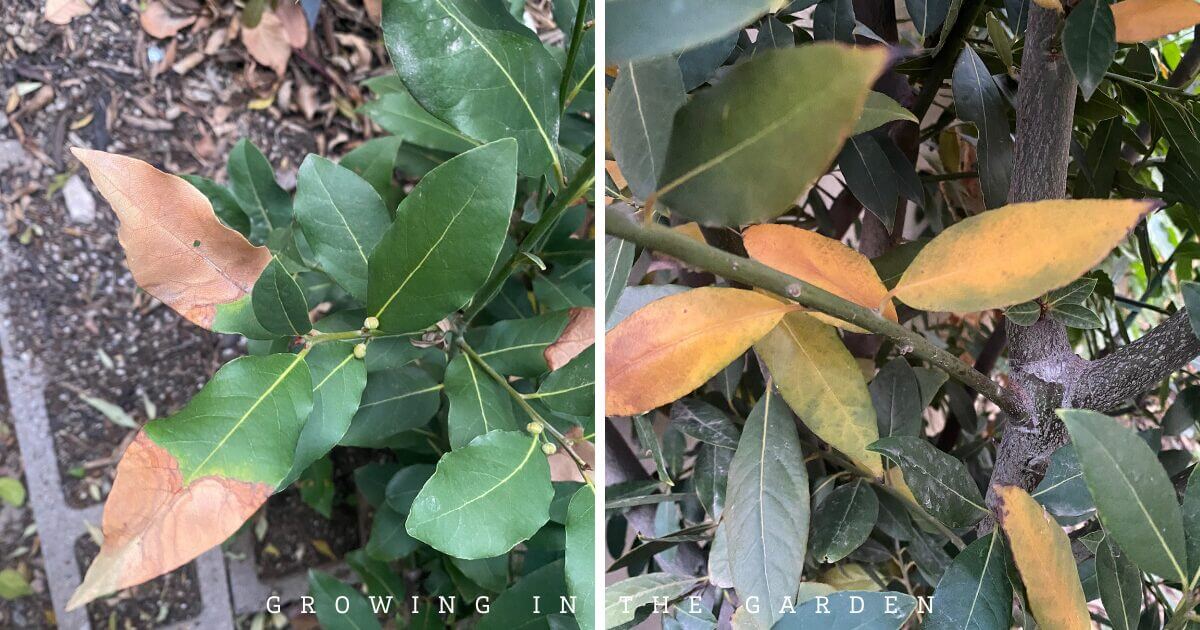
The leaves will probably turn brown and dry if a light frost hits your bay laurel. Prune off any damaged leaves after the danger of frost has passed. If your tree shows signs of die-back in the spring, prune the stems below the damage. Established bay laurel tolerates light frosts and short-term freezes.
How to care for bay leaf
One of the easier plants in my landscape is this slow-growing plant. I keep it on a drip system that gets watered about once a week in the summer and every 2-4 weeks in the cooler temperatures. Bay leaf is relatively pest-free. Some people even use bay leaves as a natural form of pest control.
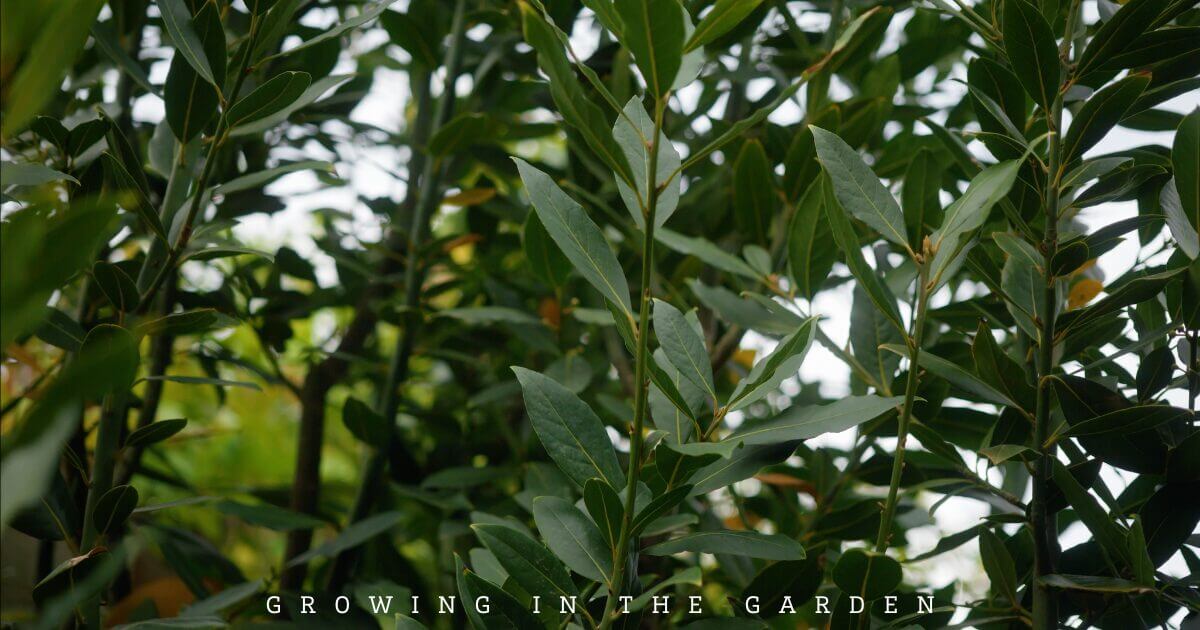
The natural upright growth form and slow growth make bay laurel an excellent privacy hedge. But you can prune as needed for shape. The best time to prune bay laurel is when it is dormant, in early spring, before new growth forms. To keep the tree small, you can prune as much or as little as you like.
How to grow bay leaf in containers
To grow bay laurel in a container, use a large pot (about 24 inches/60 cm) and a quality potting mix or raised bed mix. When planting bay laurel, choose a young but well-established transplant.
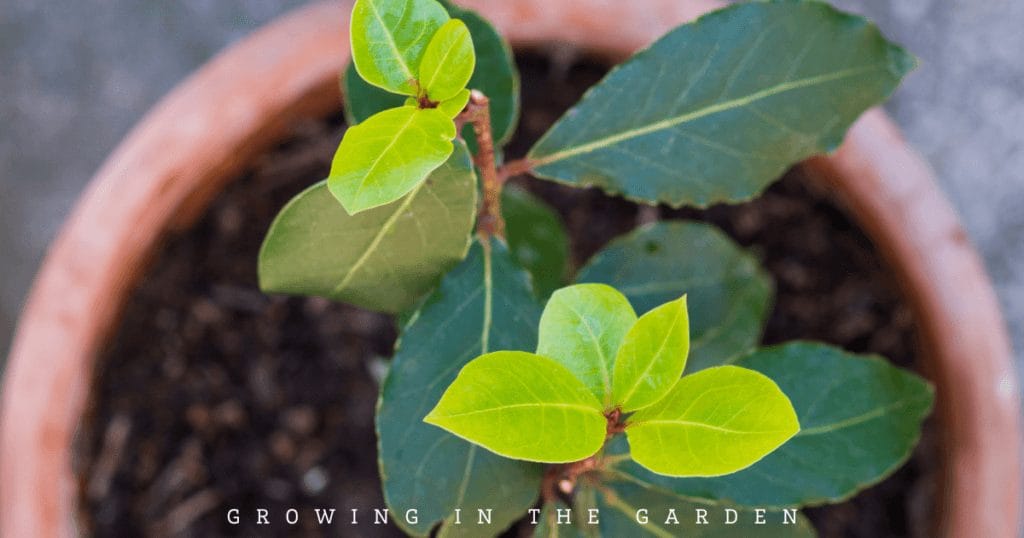
Fill the container halfway up with soil and make a hole in the center of the pot that is slightly larger than the root ball of your transplant. Carefully place the bay laurel into the hole at the same level as the nursery pot and fill in around it with soil, patting down gently to eliminate air pockets. Water the plant thoroughly after planting to settle the soil around the roots and provide moisture for growth.
Because bay laurel is slow-growing, you shouldn’t need to repot it more than once every five years. Place the container in a sunny spot where it can get at least six hours of direct sunlight daily. Once temperatures are below 50°F (10°C), bring it indoors and give it lots of light. During a freeze, cover young plants or bring them indoors.
Harvesting bay leaves
Harvesting bay laurel is simple: pick off the desired leaves. Select the larger, more flavorful leaves, and avoid taking too many leaves at once. Harvest mature leaves at any time for use in recipes. However, you should wait until the plant is a year or two old before significant harvests.
Leaves are typically dried before using (learn how below) to reduce bitterness.

How to dry bay laurel leaves
Drying your bay laurel leaves is simple. To begin, pick the leaves from your bay laurel plant during the late summer when they are mature and aromatic. For the best results, choose whole, undamaged leaves. After harvesting, wash the leaves gently in cold water and pat them dry with a paper towel to remove any debris or residue.
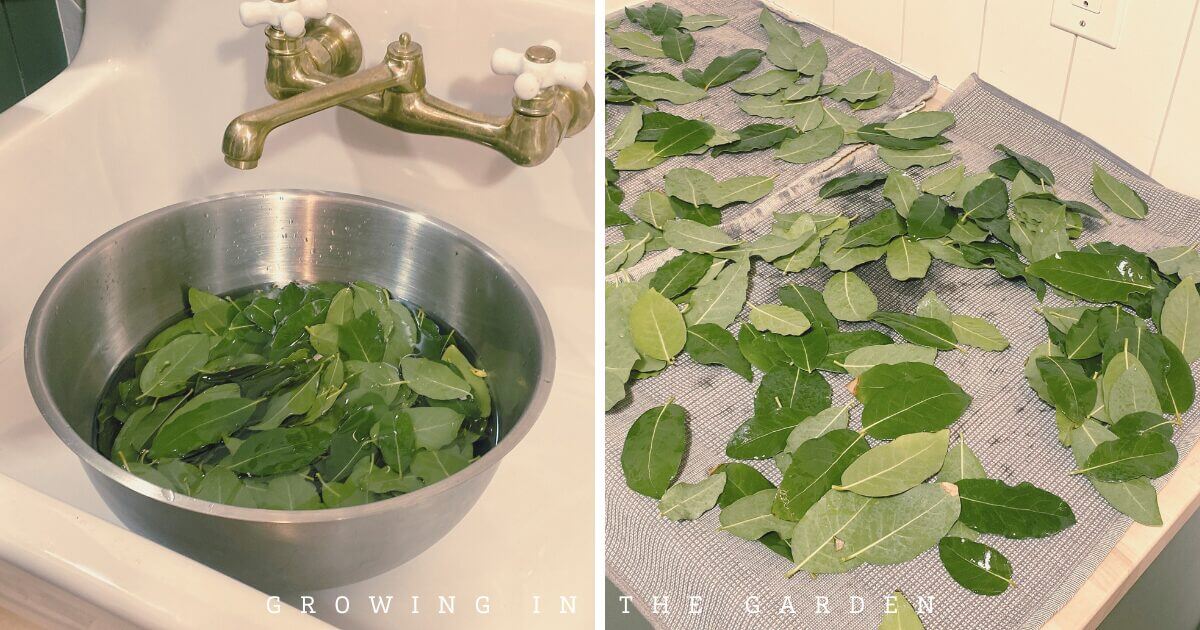
The most traditional method for drying bay leaves involves simply letting them air dry. Spread the clean leaves in a single layer on a drying rack and place them in a warm, dry room with good airflow. Avoid direct sunlight as it can fade the leaves and reduce their potent flavor. It can take a few weeks for the leaves to dry completely. You’ll know they are ready when they feel crisp to the touch and crumble when bent.
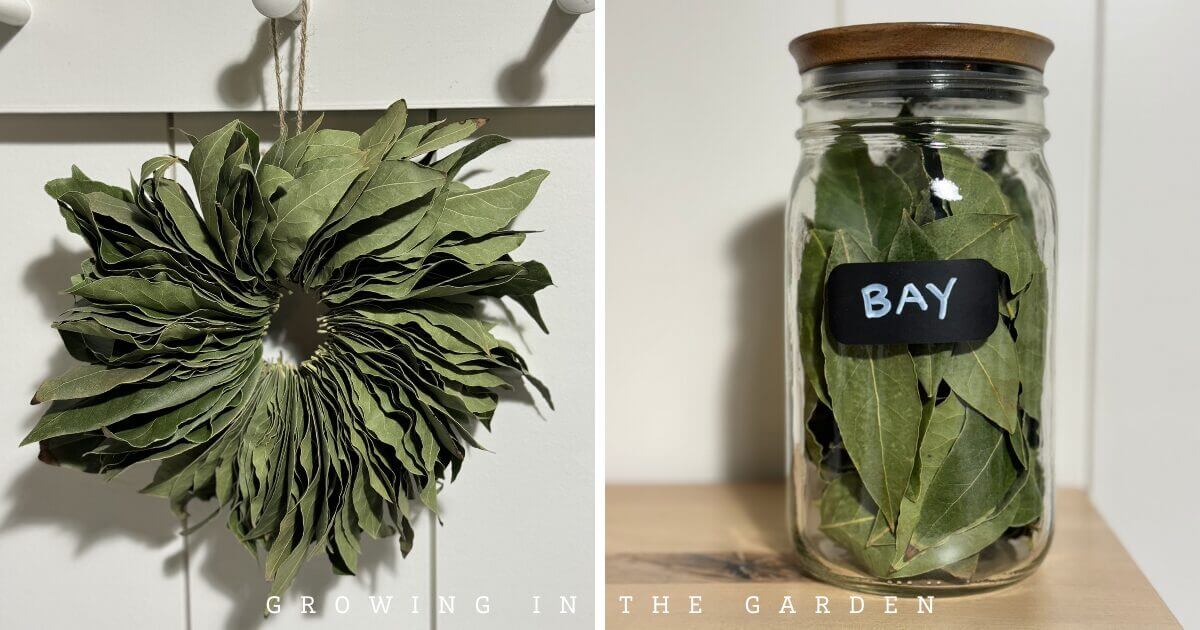
Alternatively, you can dry bay leaves in the oven for a faster process. Preheat the oven to its lowest setting, usually between 175°F to 200°F (79°C to 93°C). Place the leaves on a baking sheet lined with parchment paper for easy cleanup. Put the tray in the oven and leave the door ajar to allow moisture to escape. Check the leaves every 20 minutes and turn them occasionally to ensure even drying. This process should take about 1 to 2 hours.
Once dried, store the bay leaves in an airtight container in a cool, dark place to preserve their flavor. They can last several years when stored properly but are most flavorful within the first year.

Read this post for more information about growing herbs in the low desert of Arizona.
How to use bay leaf
When used in cooking, bay laurel leaves impart a subtle depth and a hint of earthiness to dishes. Add bay leaves early in cooking, giving them time to simmer with soups, stews, and sauces. The heat releases their volatile oils, responsible for their characteristic aroma and flavor.
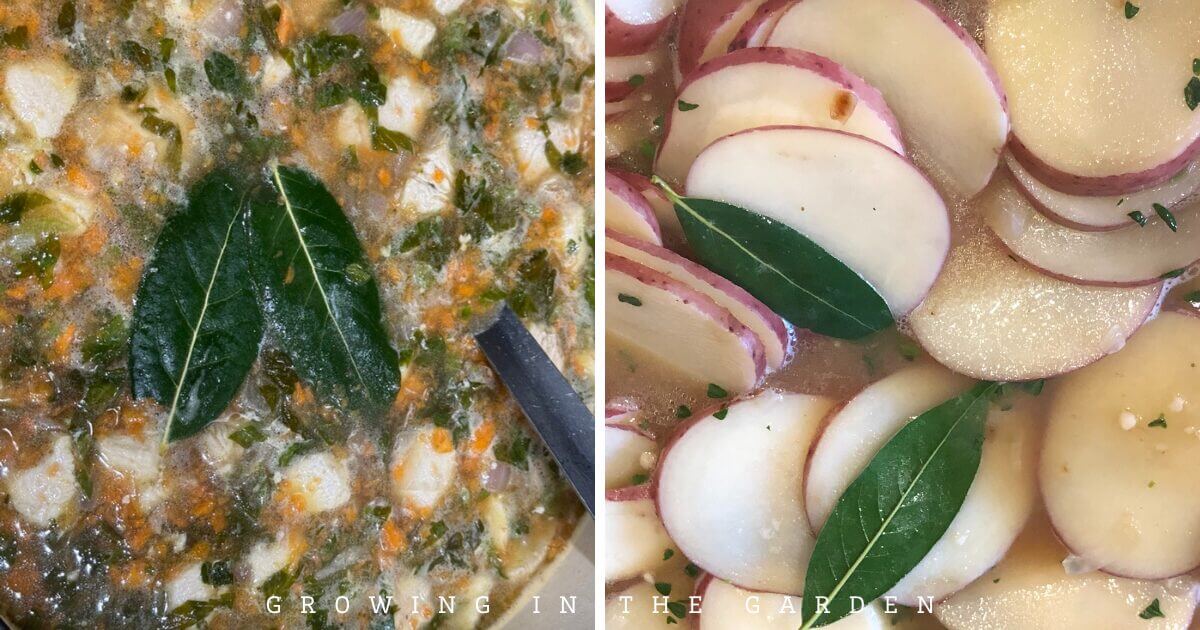
One of the most classic applications is in a bouquet garni, where bay leaves are bundled with other herbs like thyme and parsley to infuse broths. Moreover, a single leaf can be the secret ingredient in a pot of beans, a hearty Bolognese sauce, or a savory brine.
Bay leaves also add subtle depth to my Blue Cheese Thyme Scalloped Potatoes—a rich and comforting side dish that’s always a hit.
Remove leaves before serving, as they can be sharp and difficult to digest if left whole. One or two leaves are sufficient to season most recipes.
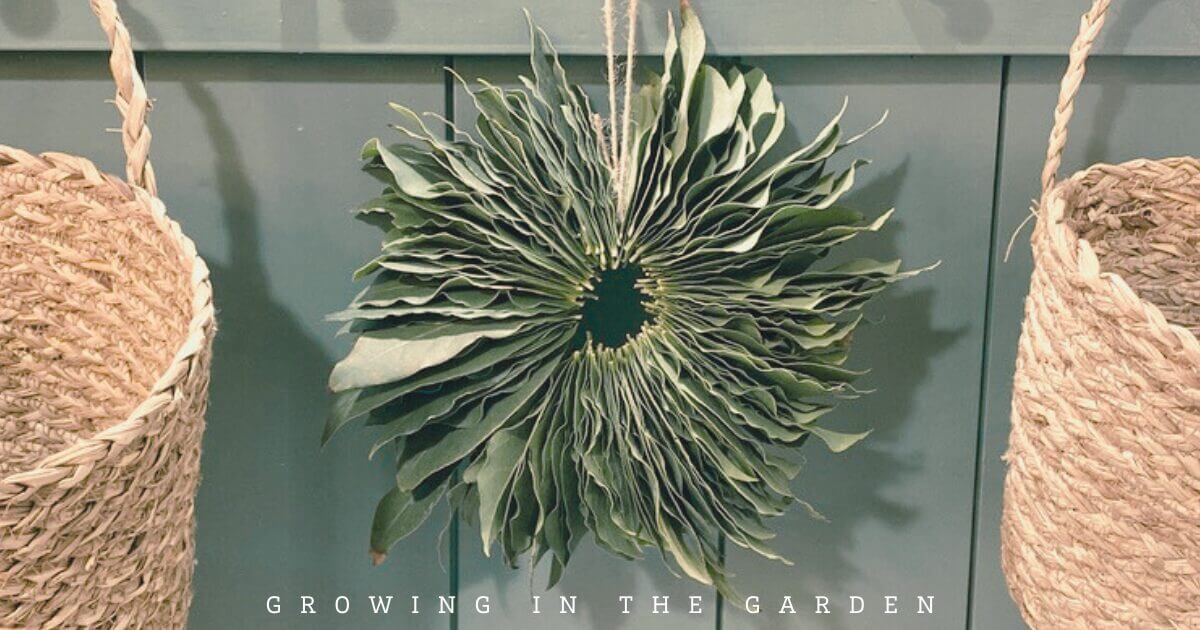
I made this fun wreath using bay leaves. I let it hang in my kitchen, so it’s easy to pop into soups or stews when I need one. The fresh leaves will dry naturally on the wreath, retaining their shape and fragrance. Learn how to make your own in this blog post.
If this post about how to grow bay leaf was helpful, please share it:
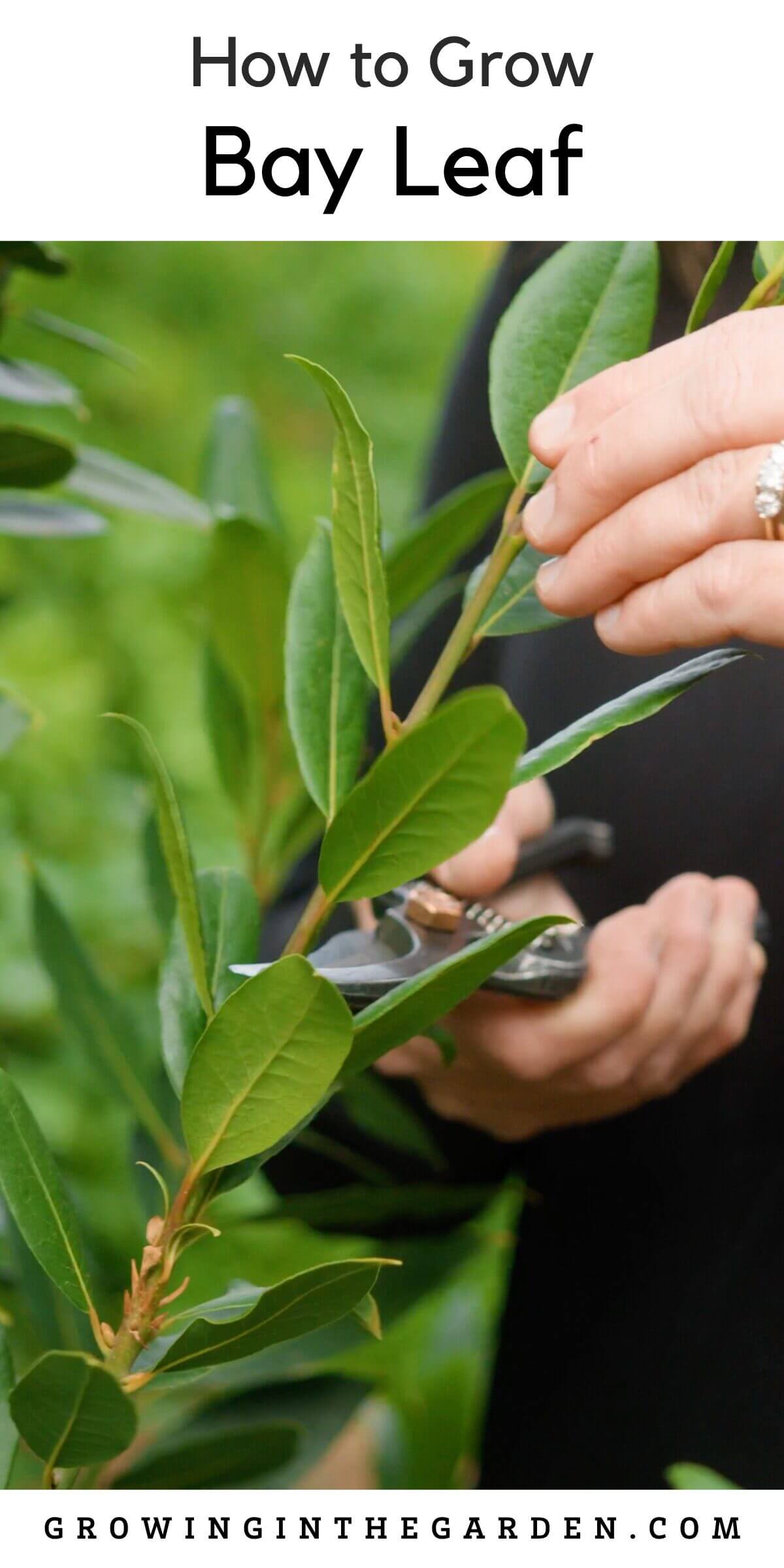
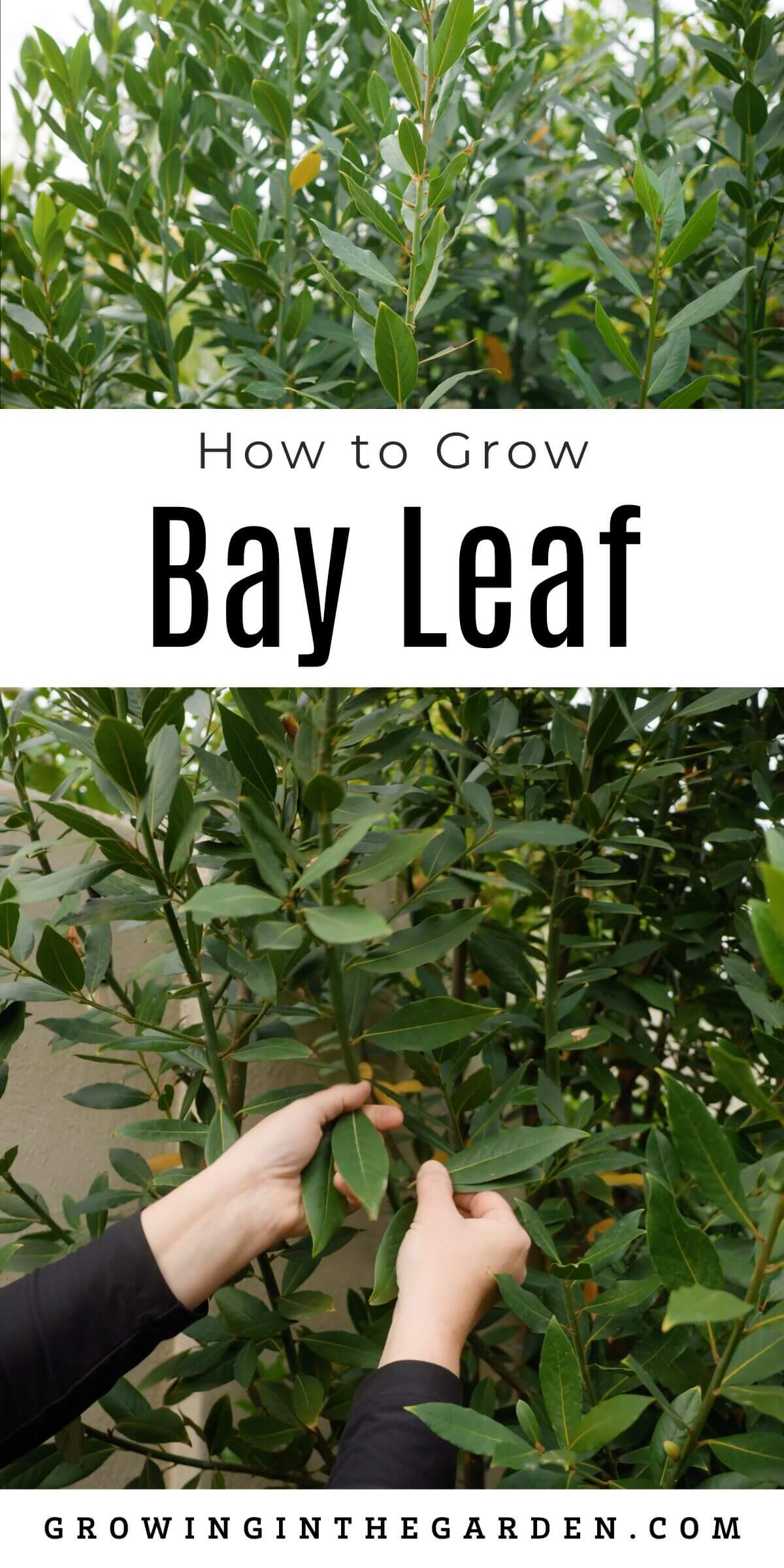






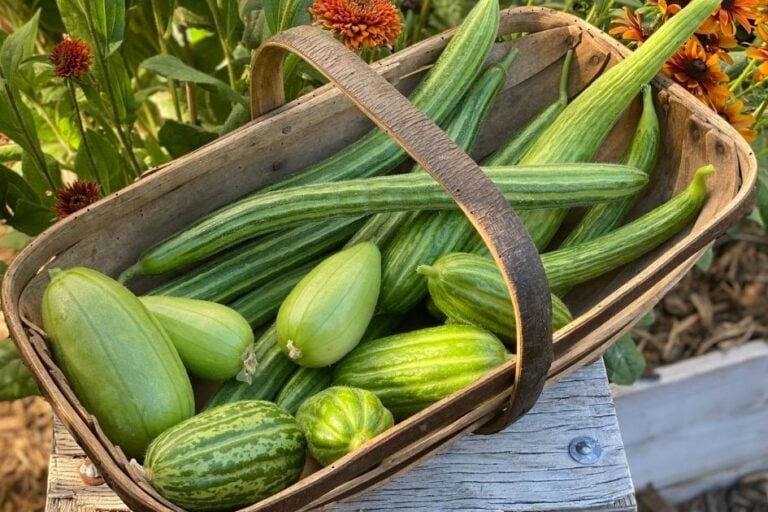


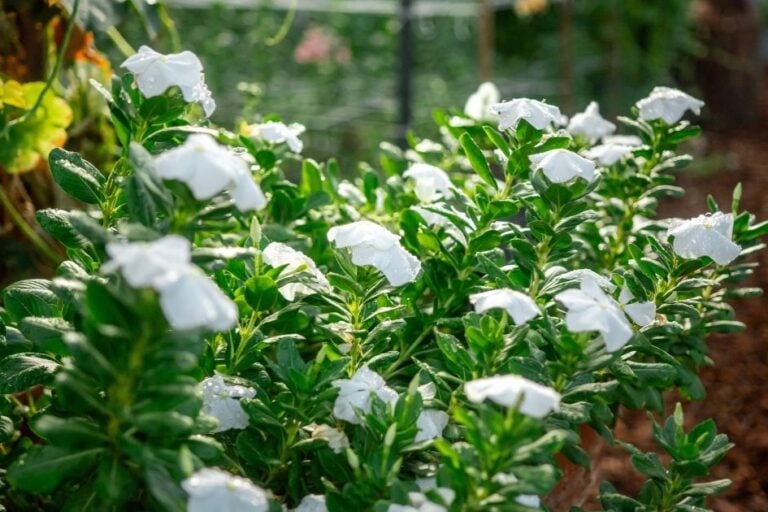
Thank you for sharing Angela! I was excited to learn that a container is an option for the Bay Laurel plant! Last Thursday I checked a Home Depot for a transplant however was unsuccessful have you seen Bay Laurel transplants anywhere in the Phoenix area or can you recommend an online site to try? Thanks for the inspiration! Oh, I just love your wreath!
@Growinginthegarden I just watched your YouTube as well, I see in the comments to try A&P Nursery or AZ Worm Farm! Thanks an Angela!
You’re welcome Thelecia!
I want my new sweet bay to grow bushier. Should I prune then back now and how much?
Wait to prune until after your last frost date. Yes, pruning back above a node will encourage a bushier plant.